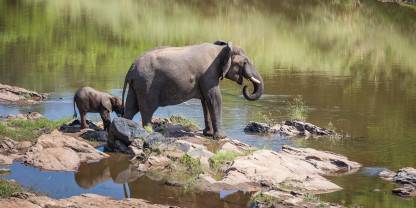Nkhotakota Wildlife Reserve is Malawi’s oldest and largest protected area. It was intensively poached prior to 2015, when the African Parks foundation took over management and started erecting a 309km/192mi perimeter fence that was completed in 2020. Large numbers of elephant, buffalo, zebra, hippo and antelope have since been translocated into Nkhotakota. Despite this, the combination of mountainous terrain, dense and low wildlife densities mean it is best treated as a wilderness rather than a safari destination.

-
Best Time To Go
- July to October (Dry bush; animals are easy to find)
-
High Season
- July to October (Never busy, but high-season rates apply)
-
Size
- 1,800km² / 695mi²
-
Altitude
-
500-1,638m /1,640-5,374ft
 View Photos
View Photos
 View Photos
+24
Photos
View Photos
+24
Photos
Pros & Cons
- Immense and largely unexploited wilderness area
- Two mid-range lodges and a bush camp cater to most budgets
- Camping is available
- A chance to support a great conservation effort
- Activities include guided drives and walks
- Very few tourists present
- Good bird watching includes several specials
- Limited accommodations
- The internal road network is restricted
- Wildlife viewing is difficult due to the hilly terrain and dense vegetation
- Tsetse flies can be a nuisance
Wildlife
Nkhotakota WR protects viable populations of several reintroduced species. Under African Parks, more than 500 elephants have been translocated here from Liwonde National Park and Majete Wildlife Reserve. Other reintroduced animals include buffalo, hippo, zebra, warthog, eland, greater kudu, impala, waterbuck and sable antelope. Carnivores are seldom seen, but leopard and spotted hyena are present in small numbers. The most visible large mammal is probably yellow baboon.
More about Nkhotakota’s wildlifeScenery
This large reserve stretches across the rugged slopes of the as it rises from the western shore of Lake Malawi. The mountainous terrain covers a range of habitats with vast patches of interspersed with marshy dambos as well as pockets of grassland and rainforest. Several scenic seasonal rivers and waterfalls run through the reserve. Both lodges are situated above permanent pools on the Bua River.
Activities
The range of activities is relatively limited. Guided drives are more about enjoying the scenery than looking for wildlife. The most reliable spots for viewing animals are the lodges, which lie alongside permanent pools that often attract elephants during the Dry season, and Henry Nsanjana Hide, which overlooks a marshy area regularly frequented by buffalo. Guided walks offer the opportunity to visit several viewpoints and waterfalls, and to enjoy the diverse birdlife.
Weather & Climate
Nkhotakota WR has a warm climate and a defined Wet season (November to April) and Dry season (May to October). As is typical in the tropics, temperatures are quite consistent throughout the year. However, it gets noticeably hotter in October, just before the rains. Heavy rainfall and high humidity can be expected from December to March. Early mornings can be quite chilly from May to August.
More about the weather and climateBest Time To Visit
The best months for wildlife viewing are from July to October, when the bush has dried out and animals gather at predictable water sources. At this time, the bush is also less thick, which makes animal spotting easier. Bear in mind, however, that October can be incredibly hot. Nature is at its most beautiful in the Wet season (November to April), but roads can become difficult to navigate and animals are dispersed.
More about the best time to visit



